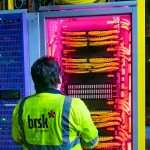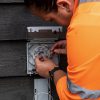Last 10% Uncertainty Still Hampering Investment in UK Rural Broadband
Broadband investment in the most rural and remote parts of the United Kingdom is still under threat due to a lack of clarity from local authorities concerning which areas constitute the last 10% of the country where BT and the government’s Broadband Delivery UK (BDUK) scheme have yet to help.
At present the £530m BDUK scheme aims to make superfast broadband (25Mbps+) ISP connectivity available to 90% of people in each local authority area by the end of 2015. However, contrary to a lot of the political spin, this more often than not refers to infill and expansion of existing FTTC/P technology in the suburbs of cities and large towns (i.e. most truly rural areas are shunned).
Advertisement
Indeed the most rural parts of the country actually exist in that final 10% or so, which won’t be covered by the BDUK scheme (at least not yet). This broadly represents areas where big commercial operators like BT would find too expensive to upgrade due to sparse populations making it harder to gain a return on the initial investment (commercially unviable).
The situation has long presented somewhat of a quandary for smaller ISPs (altnets), specifically those that want to focus on delivering faster broadband services to isolated areas where neither BT nor BDUK have shown much interest. The primary problem being, how do you identify which areas are within that final 10% when BT and BDUK prefer to protect related information (coverage and speeds) due to reasons of commercial confidentiality?
It’s vital to know which areas are likely to be in the final 10% because, as the Communications Minister (Ed Vaizey) said, “publicly-funded projects are prevented by the state aid rules from overbuilding other projects which have been notified at that point” (i.e. security for the ISPs investment). In reality this too has faced troubles, especially given the government’s controversially strict guidance for wireless networks (here).
According to Br0kenTeleph0n3, the Independent Networks Cooperative Association (INCA) have used the Freedom of Information Act (FoIA) to request related coverage and speed details from several local councils but all have been refused.
Advertisement
Malcolm Corbett, CEO of INCA, said:
“Effectively it means that the locations that BT is being paid by the taxpayer to deliver to, along with those that are out of scope, are confidential … I can’t see why anyone would invest under these circumstances“
The situation is also known to be impacting at least some of the projects that are bidding for a slice of the £20 million to be allocated through DEFRA’s Rural Community Broadband Fund (RCBF), which was specifically setup to help the final 10%. A difficult task when the lack of necessary information makes identifying that last 10% somewhat tricky, unless you’re BT of course.
Some of this is also the fault of the fact that local authorities can’t typically reveal more detailed coverage plans and maps until many months after the BDUK contracts have been signed (BTOpenreach need to conduct a proper engineer survey first). Smaller ISPs can at least gain a very rough idea of where they might be able to focus by looking at these roll-out maps, though they’re somewhat sparse on detail.
Perhaps another factor in all this could be precisely what the government’s plans are for the extra £300 million that will be set aside from the BBC TV Licence Fee to boost broadband funding between 2015 and 2017. The government intends this to go towards helping the final 10% but as yet they haven’t revealed a clear policy to support it.
However it should be said that a growing mix of smaller commercial or community funded projects, such as B4RN’s excellent work in Lancashire, have still managed to proceed without recourse to public funds by adopting a “just do it” attitude and making use of hard working locals to get the job done.
Advertisement
Meanwhile the National Audit Office (NAO), which works on behalf of Parliament to scrutinise public spending, is expected to publish a highly critical report into the value for money aspects of the government’s BDUK project next month (here). It will be interesting to see whether this covers any of the above concerns.
Mark is a professional technology writer, IT consultant and computer engineer from Dorset (England), he also founded ISPreview in 1999 and enjoys analysing the latest telecoms and broadband developments. Find me on X (Twitter), Mastodon, Facebook, BlueSky, Threads.net and Linkedin.
« UPD UK ISPs BT and TalkTalk Toughen their IWF Block of Child Abuse Sites
















































Comments are closed